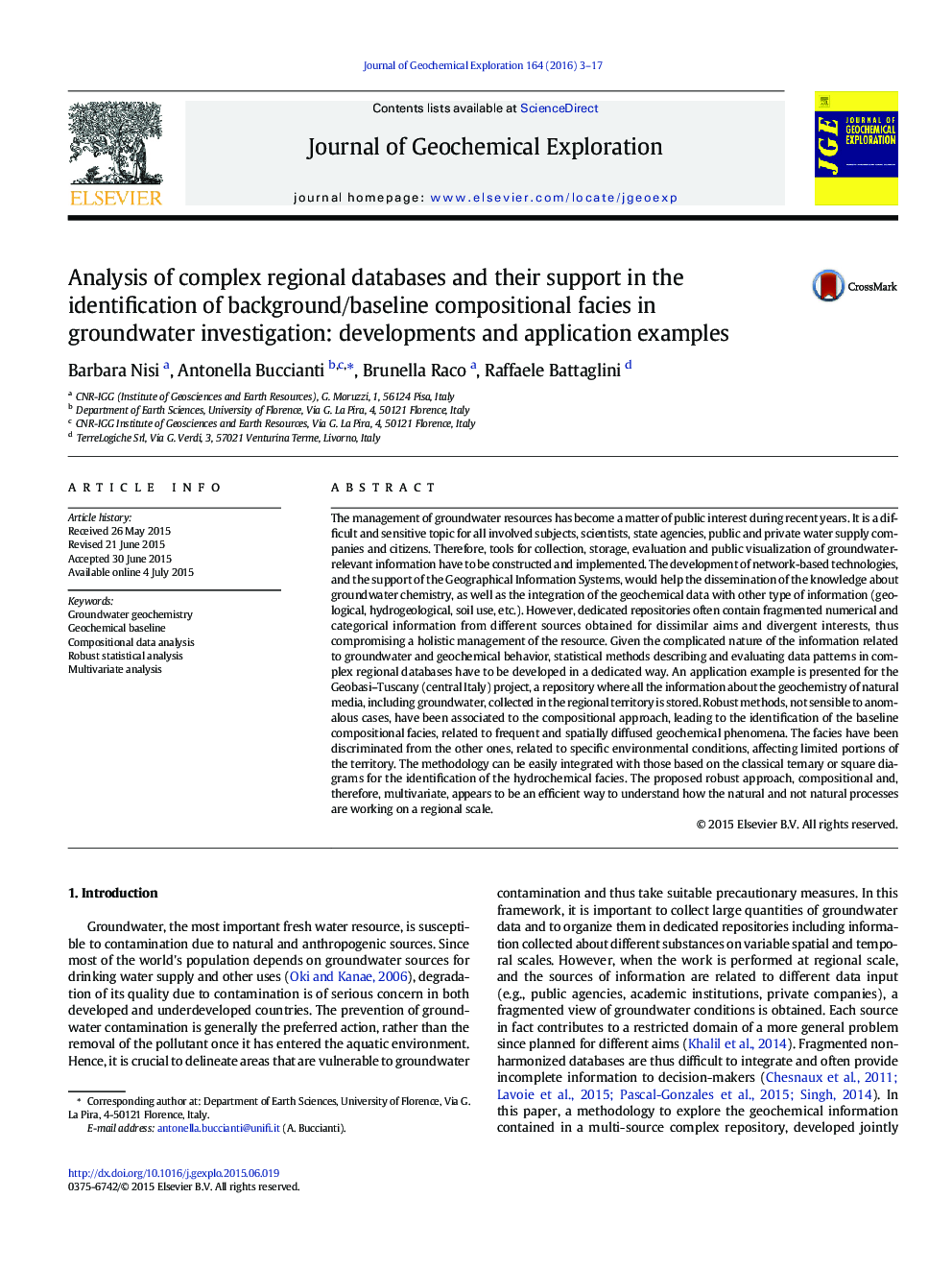| Article ID | Journal | Published Year | Pages | File Type |
|---|---|---|---|---|
| 4456974 | Journal of Geochemical Exploration | 2016 | 15 Pages |
•Comprehensive study of a groundwater chemistry repository was conducted.•Robust statistical methods for compositions are used to explore information.•The compositional concept of baseline hydrochemical facies is proposed.•Common processes spatially diffused are discriminated from anomalous areas.
The management of groundwater resources has become a matter of public interest during recent years. It is a difficult and sensitive topic for all involved subjects, scientists, state agencies, public and private water supply companies and citizens. Therefore, tools for collection, storage, evaluation and public visualization of groundwater-relevant information have to be constructed and implemented. The development of network-based technologies, and the support of the Geographical Information Systems, would help the dissemination of the knowledge about groundwater chemistry, as well as the integration of the geochemical data with other type of information (geological, hydrogeological, soil use, etc.). However, dedicated repositories often contain fragmented numerical and categorical information from different sources obtained for dissimilar aims and divergent interests, thus compromising a holistic management of the resource. Given the complicated nature of the information related to groundwater and geochemical behavior, statistical methods describing and evaluating data patterns in complex regional databases have to be developed in a dedicated way. An application example is presented for the Geobasi–Tuscany (central Italy) project, a repository where all the information about the geochemistry of natural media, including groundwater, collected in the regional territory is stored. Robust methods, not sensible to anomalous cases, have been associated to the compositional approach, leading to the identification of the baseline compositional facies, related to frequent and spatially diffused geochemical phenomena. The facies have been discriminated from the other ones, related to specific environmental conditions, affecting limited portions of the territory. The methodology can be easily integrated with those based on the classical ternary or square diagrams for the identification of the hydrochemical facies. The proposed robust approach, compositional and, therefore, multivariate, appears to be an efficient way to understand how the natural and not natural processes are working on a regional scale.
